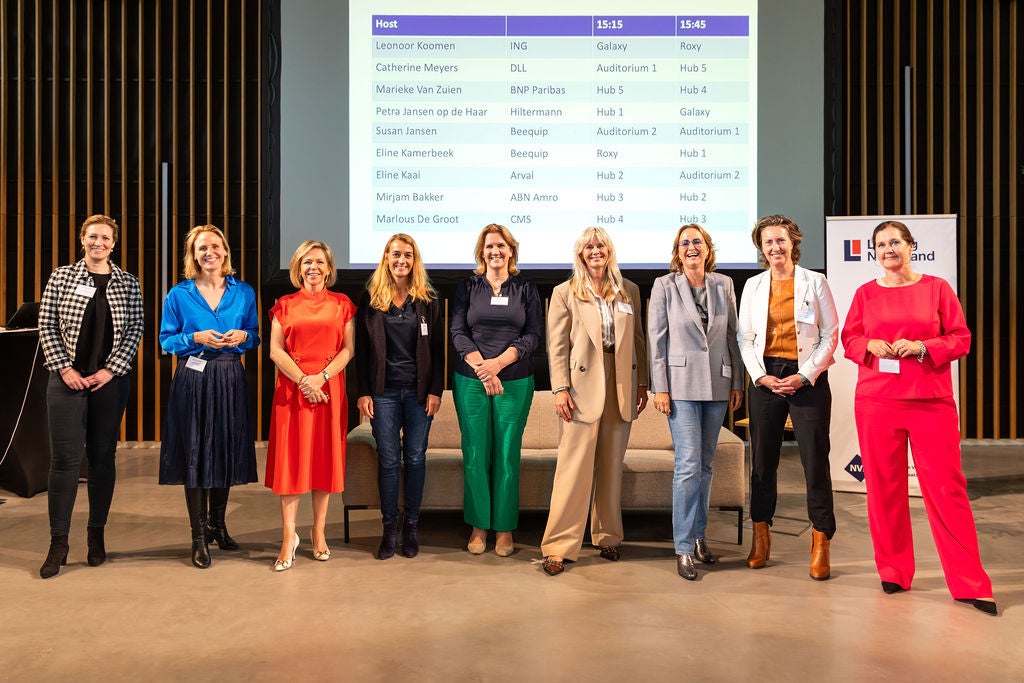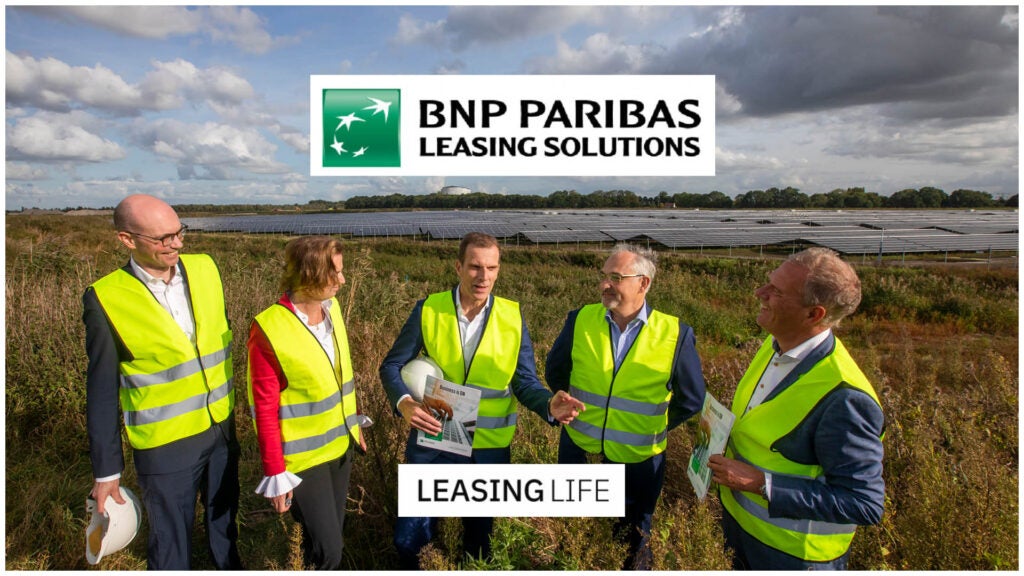ING Lease UK and De Lage Landen Leasing Limited are two
very different UK-based leasing companies, but they have two things
in common – both are Dutch, and both are growing.
Fred Crawley and
Brendan Malkin go behind
the scenes.
At first glance it would appear that
Chris Stamper, head of ING Lease UK, and Robert Ceribelli, who runs
the UK arm of De Lage Landen (DLL), do not have much in common –
apart from, that is, the obvious fact that both run the UK arms of
Dutch bank-owned lessors.
Firstly, they both have completely different
backgrounds. Ceribelli, who hails from Philadelphia in the north
east of the United States, spent the four years before his move to
DLL in the UK in October 2008 running a sales division in North
America.
Stamper, on the other hand, is a veteran of UK
wholesale leasing; a Gateshead native who had 26 years of
experience at Lombard and Abbey National under his belt before
joining ING.
Also, while Stamper’s route to market is
almost exclusively via brokers, Ceribelli is committed to
retail-based vendor finance, effectively ruling out intermediaries
as a source of business.
How well do you really know your competitors?
Access the most comprehensive Company Profiles on the market, powered by GlobalData. Save hours of research. Gain competitive edge.

Thank you!
Your download email will arrive shortly
Not ready to buy yet? Download a free sample
We are confident about the unique quality of our Company Profiles. However, we want you to make the most beneficial decision for your business, so we offer a free sample that you can download by submitting the below form
By GlobalDataWhile Stamper, largely because of his
grounding in the UK leasing market but also because it makes
business sense to be so, is well-known in the marketplace,
Ceribelli has so far been less visible. Ceribelli, however, is
planning to change this, partly by becoming more involved in the
work of the Finance & Leasing Association (FLA).
Nevertheless, Stamper and Ceribelli do share
something in common – both are part of leasing companies that have
remained profitable, and contributed significantly to the financial
health of their parent banks.
Both ING Group and Rabobank, of which DLL is a
subsidiary, reported 3.6 percent of their net profit came from
leasing business in their last financial reports.
While DLL turned a €48 million profit in the
first 6 months of 2009 compared to ING Lease’s €29 million at year
end, DLL’s figure was 58 percent down year on year while ING
Lease’s was up from €7 million the year before.
Both leasing networks reported a significant
rise in margins on new business written in 2009.
ING Lease UK
Portfolio size: not
divulged
Staff: 320
Key personnel: Rob Harris,
financial products, Mark Picken, small-ticket sales, Owen Francis,
risk director, Will Lewis, finance director, John Carter, head of
commercial mortgages
Headquarters: Redhill,
Surrey
Date of incorporation:
1989
Routes to market: Brokers and
dealers
Key asset sectors: Smaller
ticket assets, excepting Telecoms, Catering, and equipment for
Hotels, pubs, clubs.
 When ING Lease
When ING Lease
acquired three small ticket leasing businesses from Abbey National
in 2004, it also acquired Chris Stamper, who had been with Abbey’s
First National operation since 1999.
Hailing from Gateshead in the UK’s northeast,
Stamper had worked with RBS’s leasing arm Lombard for 21 years
before joining First National, giving him a good grounding in both
direct and wholesale lease business.
In November 2005, he was made ING Lease UK’s
CEO, and was charged with building up the ING Lease presence in the
UK through a radical transformation of the business.
Since incorporation in 1989, ING Lease in
Britain had mainly looked at deals in the £250,000-and-above
bracket, with a 1991 venture into agricultural finance being what
Stamper calls the “first foray” into small-ticket business.
Ten years later, in 2001, the entire company
was working from the West Byfleet offices of the agricultural
division and had begun to look at other small ticket assets.
This paved the way for the Abbey acquisitions,
which gave ING another agricultural business, an office equipment
lessor and a general asset finance provider to work with – all with
small-ticket lease books.
By the time Stamper had taken the reins, the
mandate was clear – ING wanted a greater market share for its UK
leasing business, and without a retail distribution network like
that enjoyed in the group’s Benelux home markets, smaller-ticket
intermediary business was the way forward.
“This strategy applied throughout the
business,” says Stamper. “In the middle-ticket area, intermediaries
included other financial institutions. We also developed our block
discounting business, which dealt with intermediaries in a
different way – providing funding for those with their own finance
books.”
Stamper and his management team have stuck to
these guns over the last two difficult years, while other
bank-owned lessors have abandoned introduced business in favour of
direct sales to bank customers. In the words of one broker last
month, “they take a decent amount of time to consider their
reaction to the market, and then stick with whatever decision is
made”.
Stamper says: “We tend not to jump to
conclusions. We analyse the implications of what is happening on
the market, and then react based on the facts and numbers that get
turned up, rather than the reactions of others.”
De Lange Landen
DLL’s growth has partly been achieved through
selective acquisition of vendor finance agreements that had been
sold by other leasing companies as well as by increased penetration
of its own existing relationships.
This journey has far from been easy given the
challenges caused by the recession – challenges which Ceribelli
predicts will continue during 2010.
However, finding new vendor finance business
has only been a part of his strategy. As an adjunct to his core
vendor finance business, Ceribelli has focused some investment in
providing finance for the whole value chain of an asset, from
manufacture to distribution to the end customer.
Providing inventory finance has been an
important part of this strategy, and one he wants to continue to
grow in the future – particularly as it is a stated objective of
the company to do so. At present, Ceribelli remarked, inventory
finance is “relatively small” in the UK, although it grew last
year, and he expects it will do so again in 2010.
Alongside this, the company, along with its
Dutch parent, has invested heavily in enhancing its existing
technology systems and software. This has focused, according to
Ceribelli, on “smoothing the processing” of deals at the front end
of the business, and “digitising some of the processing”.
“We are growing our service offering,” he
remarked, adding that these developments were being carried out
in-house.
As well as trying to grow the business, much
of Ceribelli’s job is also about juggling priorities.
In addition to helping to increase the finance
penetration of DLL’s large global customers, he also focuses on
building smaller UK relationships while beefing-up its dealer,
non-vendor arm.
He is well-supported by DLL’s parent bank,
although he does occasionally use wholesale finance from other
leasing companies.
Ceribelli has not needed to make use of
securitisations and the capital markets to raise additional
capital.
In addition, Ceribelli must also consider the
need to service a wide range of products offered by all of DLL’s
worldwide country operations while keeping a close watch on which
assets are performing better at any given time.
Right now the company’s food and agriculture
division is performing particularly well, although Ceribelli faces
challenges across the board with pricing and loan-loss ratios
remaining “flat” year-on-year.
In terms of residual values, Ceribelli
commented that he did not expect them to “get much better” this
year, although he added that “there might be a few segments that
might see an upturn over the next year”.
Stamper, meanwhile, says he is
planning for 2010 to be much the same as 2009 in terms of business
volumes, with lower bad debt levels as a result of the steady
decrease in arrears figures identified since June 2009.
When asked what his aim is for the UK business
of ING Lease in the longer term, his response is simple: “To be the
most respected asset finance company in the UK – providing a
market-leading customer experience, while exceeding our
shareholders’ expectations.”
After a pause, he repeats and elaborates on
the last five words of the mission statement. Whereas customer
service is on an equal footing with profitability in terms of
building the reputation of the business, he says, it is ING Lease
UK’s consistent profitability that has ensured the support of its
parent.
It is ING Lease Holding’s ambition to see an
ING lessor in the top five companies of every major European
market. In “home” regions such as the Netherlands, this has meant a
more conventional strategy of selling to banking group customers
through retail distribution channels.
But in the UK, as in Italy, ING has no retail
network – a reality that has driven Stamper’s push to grow ING
Lease UK through an ever-increasing network of brokers.
The drive for profit has meant that ING has
not stayed active in all areas, however.
“I have a good team of managers, and we spend
a lot of our time keeping a very close watch on all the important
numbers,” Stamper says.
“As a result, we can identify precisely where
we have problems by assets, by customer type, by industry type and
by introducer, and can focus on the areas that will offer best
returns.”
In the last two years this has meant a general
retreat from sectors such as telecoms and hospitality, but Stamper
says that there are currently no plans to make exits from or
entries into particular asset classes for 2010.
De Lage Landen Leasing
Limited
Portfolio size: predicted to
be £1 billion by year end 2010
Staff: 130
Key personnel: Rob Ceribelli,
managing director, David Dennehy, credit and risk manager
Headquarters: Watford
Date of incorporation: May
1989
Routes to market: Vendor
finance through dealer, manufacturer and wholesale finance
Key asset sectors:
Construction and industrial, office technology, healthcare, food
and agriculture, transport and customers of Rabobank, its parent
bank.
 Rob Ceribelli
Rob Ceribelli
could not have been appointed managing director of vendor finance
specialist De Lage Landen Leasing Limited (DLL) at a more
challenging time. It was 18 months ago, the world was in the midst
of the recession, and One World Leasing had just been the first of
many leasing companies in Britain to enter administration.
A native of Philadelphia, Ceribelli, who at
the time had already spent four years working for DLL for its US
arm’s financial institutions and office technology groups, was
still committed to growing the business, whatever the prevailing
economic conditions.
He achieved exactly this, not just because he
managed to more fully “realise some existing vendor finance
partners”, but also because it was during this time that a number
of large and high-profile vendor finance agreements came up for
grabs as companies like GE Capital and CIT partially pulled out of
the marketplace.
Citing continued “business development
activity” as a reason for this growth, which reached double-digit
figures during the year, Ceribelli predicts a further upturn in new
business sales during 2010 and beyond. Yet he still has the
pragmatism of a natural salesperson.
He is happy to admit that since his arrival at
the company he has “had a very difficult time continuing to support
his vendor partners”, that collections and underwriting work have
been “challenging”, and that it has been a “difficult time to be
supporting our customers”. He described 2010 as “more of the same”
and that it “will still be difficult”.
Of Ceribelli’s many strategies for survival
and growth during the downturn, one has been making sure he
properly manages his priorities. This has meant ensuring that he
did not rush into replacing vendor relationships left vacant by the
market departure of other lessors, particularly as some “finance
players pulled out very quickly”, and also to hunt for new business
while still supporting existing customers.
The company continues to focus on its large
international customers, including the likes of Schmitz Cargobull
and Jungheinrich, from which it sources more than half of its
business, as well as its dealer relationships and its smaller
vendor clients.
Meanwhile, with further plans to enhance
cradle-to-grave finance of products, particularly inventory
finance, Ceribelli’s commitment to cautious growth looks set to
continue for some time yet.







